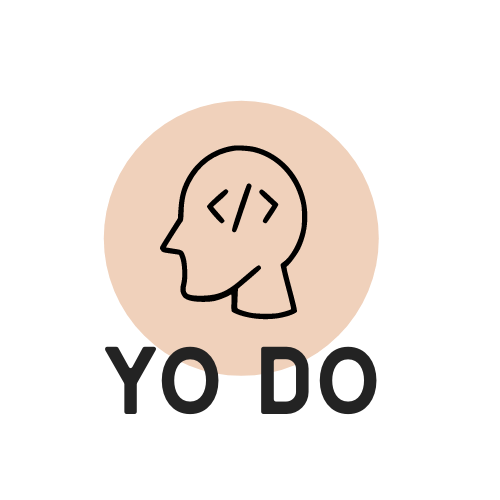Click to order
Get lifetime access to Google Associate Cloud Engineer Course
Total:
Problems with payment? Contact us in chat in the lower right corner.
By filling out this field, you agree to the offer agreement https://yodo.me/offer_en
Google Associate
Cloud Engineer
Cloud Engineer
Google Cloud Platform Certification
Training chat-bot course.
Training chat-bot course.
$9.9

English
$135


full lifetime access

What you'll learn:
The skills required by the Associate Cloud Engineer (ACE) certification:
• Deploying applications
• Monitoring operations
• Managing enterprise solutions
The course also helps students demonstrate
those skills through certification.
The certification requires candidates to be familiar with GCP products, use Cloud SDK and Cloud Console UI, to perform many common platform-based tasks.
• Deploying applications
• Monitoring operations
• Managing enterprise solutions
The course also helps students demonstrate
those skills through certification.
The certification requires candidates to be familiar with GCP products, use Cloud SDK and Cloud Console UI, to perform many common platform-based tasks.




Google Associate Cloud Engineer course is learning
in the form of a game
in the form of a game
Chat support, where there are already 756 students and analysis of all questions
Learning principle -
first practice, then theory
first practice, then theory
The aim of the course is to increase
your income in 1.5-2 times
your income in 1.5-2 times


Course program

CHAPTER
Part 1. Registration and setting up cloud projects and accounts
Activities include:
- GCP account registration.
- Creating projects, folders, organizations.
- Enabling APIs within projects.
- Work with Google Cloud Platform Console.
- Creating a Compute Engine instance and install nginx.
Part 2. Managing permissions and roles.
Activities include:
- Assigning users to predefined IAM roles within a project
- Managing users in Cloud Identity (manually and automated)
- Understanding service accounts.
- IAM best practices.
Part 3. Installing and configuring the command line interface (CLI)
- Installing and configuring the command line interface (CLI), specifically the Cloud SDK (e.g., setting the default project).
- Understanding ‘gcloud’ commands.
- Working with common ‘gcloud’ commands.
- Creating a Compute Engine instance using SDK.

CHAPTER
Part 1. Planning and configuring a cloud solution
Planning and estimating GCP product use using the Pricing Calculator
Part 2. Planning and configuring compute resources
Considerations include:
- Selecting appropriate compute choices for a given workload (e.g., Compute Engine, Google Kubernetes Engine, App Engine, Cloud Run, Cloud Functions)
- Using preemptible VMs and custom machine types as appropriate
Part 3. Planning and configuring data storage options
Considerations include:
- Product choice (e.g., Cloud SQL, BigQuery, Cloud Spanner, Cloud Bigtable)
- Choosing storage options (e.g., Standard, Nearline, Coldline, Archive)
Part 4. Planning and configuring network resources
Tasks include:
- Differentiating load balancing options
- Identifying resource locations in a network for availability
- Configuring Cloud DNS

CHAPTER
Part 1. Deploying and implementing a cloud solution
Deploying and implementing Compute Engine resources.
Tasks include:
Tasks include:
- Launching a compute instance using Cloud Console and Cloud SDK (gcloud) (e.g., assign disks, availability policy, SSH keys)
- Creating an autoscaled managed instance group using an instance template
- Generating/uploading a custom SSH key for instances
- Configuring a VM for Stackdriver monitoring and logging
- Assessing compute quotas and requesting increases
- Installing the Stackdriver Agent for monitoring and logging
Part 2. Deploying and implementing Google Kubernetes Engine resources
Tasks include:
- Deploying a Google Kubernetes Engine cluster
- Deploying a container application to Google Kubernetes Engine using pods
- Configuring Google Kubernetes Engine application monitoring and logging
Part 3. Deploying and implementing App Engine, Cloud Run, and Cloud Functions resources
Tasks include, where applicable:
- Deploying an application, updating scaling configuration, versions, and traffic splitting
- Deploying an application that receives Google Cloud events (e.g., Cloud Pub/Sub events, Cloud Storage object change notification events)
Part 4. Deploying and implementing data solutions
Tasks include:
- Initializing data systems with products (e.g., Cloud SQL, Cloud Datastore, BigQuery, Cloud Spanner, Cloud Pub/Sub, Cloud Bigtable, Cloud Dataproc, Cloud Dataflow, Cloud Storage)
- Loading data (e.g., command line upload, API transfer, import/export, load data from Cloud Storage, streaming data to Cloud Pub/Sub)
Part 5. Deploying and implementing networking resources
Tasks include:
- Creating a VPC with subnets (e.g., custom-mode VPC, shared VPC)
- Launching a Compute Engine instance with custom network configuration (e.g., internal-only IP address, Google private access, static external and private IP address, network tags)
- Creating ingress and egress firewall rules for a VPC (e.g., IP subnets, tags, service accounts)
- Creating a VPN between a Google VPC and an external network using Cloud VPN
- Creating a load balancer to distribute application network traffic to an application (e.g., Global HTTP(S) load balancer, Global SSL Proxy load balancer, Global TCP Proxy load balancer, regional network load balancer, regional internal load balancer)
Part 6. Deploying a solution using Cloud Marketplace
Tasks include:
- Browsing Cloud Marketplace catalog and viewing solution details
- Deploying a Cloud Marketplace solution
Part 7. Deploying application infrastructure using Cloud Deployment Manager
Tasks include:
- Developing Deployment Manager templates
- Launching a Deployment Manager template

CHAPTER
Part 1. Ensuring successful operation of a cloud solution
Managing Computer Engine resources.
Tasks include:
Tasks include:
- Managing a single VM instance (e.g., start, stop, edit configuration, or delete an instance)
- SSH/RDP to the instance
- Attaching a GPU to a new instance and installing CUDA libraries
- Viewing current running VM inventory (instance IDs, details)
- Working with snapshots (e.g., create a snapshot from a VM, view snapshots, delete a snapshot)
- Working with images (e.g., create an image from a VM or a snapshot, view images, delete an image)
- Working with instance groups (e.g., set autoscaling parameters, assign instance template, create an instance template, remove instance group)
- Working with management interfaces (e.g., Cloud Console, Cloud Shell, GCloud SDK)
Part 2. Managing Google Kubernetes Engine resources
Tasks include:
- Viewing current running cluster inventory (nodes, pods, services)
- Browsing the container image repository and viewing container image details
- Working with node pools (e.g., add, edit, or remove a node pool)
- Working with pods (e.g., add, edit, or remove pods)
- Working with services (e.g., add, edit, or remove a service)
- Working with stateful applications (e.g. persistent volumes, stateful sets)
- Working with management interfaces (e.g., Cloud Console, Cloud Shell, Cloud SDK)
Part 3. Managing App Engine and Cloud Run resources
Tasks include:
- Adjusting application traffic splitting parameters
- Setting scaling parameters for autoscaling instances
- Working with management interfaces (e.g., Cloud Console, Cloud Shell, Cloud SDK)
Part 4. Managing storage and database solutions
Tasks include:
- Moving objects between Cloud Storage buckets
- Converting Cloud Storage buckets between storage classes
- Setting object life cycle management policies for Cloud Storage buckets
- Executing queries to retrieve data from data instances (e.g., Cloud SQL, BigQuery, Cloud Spanner, Cloud Datastore, Cloud Bigtable)
- Estimating costs of a BigQuery query
- Backing up and restoring data instances (e.g., Cloud SQL, Cloud Datastore)
- Reviewing job status in Cloud Dataproc, Cloud Dataflow, or BigQuery
- Working with management interfaces (e.g., Cloud Console, Cloud Shell, Cloud SDK)
Part 5. Managing networking resources
Tasks include:
- Adding a subnet to an existing VPC
- Expanding a subnet to have more IP addresses
- Reserving static external or internal IP addresses
- Working with management interfaces (e.g., Cloud Console, Cloud Shell, Cloud SDK)
Part 6. Monitoring and logging
Tasks include:
- Creating Stackdriver alerts based on resource metrics
- Creating Stackdriver custom metrics
- Configuring log sinks to export logs to external systems (e.g., on-premises or BigQuery)
- Viewing and filtering logs in Stackdriver
- Viewing specific log message details in Stackdriver
- Using cloud diagnostics to research an application issue (e.g., viewing Cloud Trace data, using Cloud Debug to view an application point-in-time)
- Viewing Google Cloud Platform status
- Working with management interfaces (e.g., Cloud Console, Cloud Shell, Cloud SDK)

CHAPTER
Part 1. Configuring access and security
Managing identity and access management (IAM).
Tasks include:
Tasks include:
- Viewing IAM role assignments
- Assigning IAM roles to accounts or Google Groups
- Defining custom IAM roles
Part 2. Managing service accounts
Tasks include:
- Managing service accounts with limited privileges
- Assigning a service account to VM instances
- Granting access to a service account in another project
Part 2. Viewing audit logs for project and managed services
Viewing audit logs for project and managed services

Google Cloud Platform Certification
Training chat-bot course.
Training chat-bot course.
$9.9
Google Associate Cloud Engineer

Access now and forever.
+ Electronic certificate of completion








